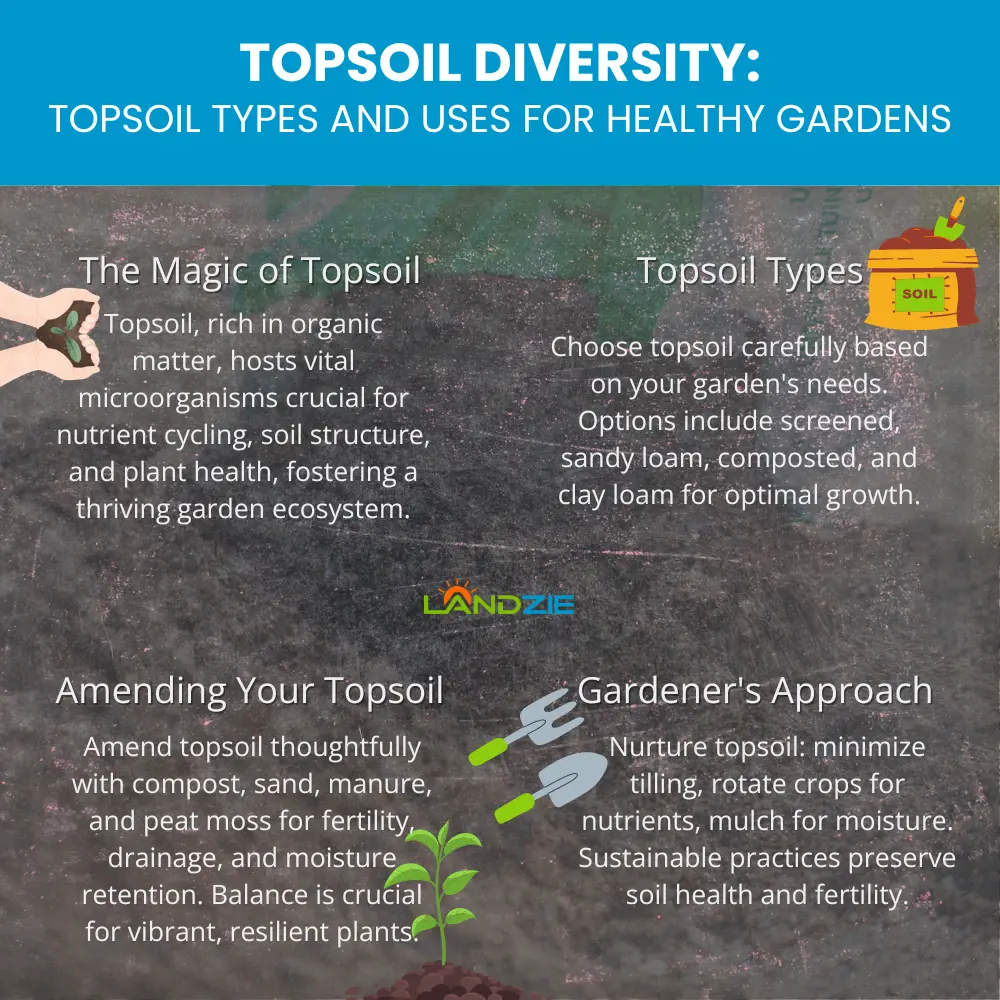Introduction
Using top soil in your garden is a fundamental step toward cultivating healthy plants and vibrant landscapes. Top soil, the uppermost layer of soil, is rich in organic matter and nutrients essential for plant growth. Understanding how to properly use top soil can dramatically improve soil structure, fertility, and moisture retention. This article explores the best practices for using top soil in your garden, helping both novice and experienced gardeners maximize their garden’s potential.
What Is Top Soil and Why Is It Important?
Top soil is the top 2 to 8 inches of soil that contains the highest concentration of organic matter and microorganisms. It plays a critical role in:
- Providing nutrients to plants
- Supporting root development
- Maintaining soil moisture
- Encouraging beneficial microbial activity
Unlike subsoil, top soil is darker and looser, making it ideal for planting. Using quality top soil in your garden enhances plant health by offering a fertile environment and improving aeration.
How to Choose the Right Top Soil for Your Garden
Selecting the proper top soil is crucial. Here are key factors to consider:
- Texture: Look for loamy top soil, which balances sand, silt, and clay for optimal drainage and nutrient retention.
- Organic Content: High organic matter improves fertility and soil structure.
- pH Level: Most plants thrive in slightly acidic to neutral soil (pH 6.0-7.0).
- Contaminants: Ensure the top soil is free from chemicals, debris, or weed seeds.
Tip: Purchase screened and tested top soil from reputable suppliers to ensure quality.
Best Practices for Using Top Soil in Your Garden
Preparing the Garden Bed
- Clear debris and weeds: Remove old plants, rocks, and weeds to give top soil a clean base.
- Loosen existing soil: Use a garden fork or tiller to break up compacted soil, enhancing root penetration.
- Add top soil: Spread a 2-4 inch layer of quality top soil over the prepared area.
- Mix thoroughly: Incorporate the top soil with the existing soil to create a uniform growing medium.
Planting and Maintenance
- Water the soil after spreading to help settle it and promote microbial activity.
- Mulch the surface to retain moisture and reduce erosion.
- Regularly amend soil with compost or organic fertilizers to maintain nutrient levels.
Common Uses of Top Soil in the Garden
- Lawn Repair: Top soil provides an excellent base for seeding or patching bare spots.
- Flower Beds: Enhances nutrient availability and supports root growth for flowers.
- Vegetable Gardens: Vital for growing healthy vegetables with rich nutrients.
- Raised Beds: Acts as the main growing medium, ensuring good drainage and fertility.
Expert Tips to Maximize the Benefits of Top Soil
- Test your garden soil periodically to monitor nutrient levels and pH.
- Avoid using top soil that is too sandy or heavy in clay, as it can hinder plant growth.
- Incorporate organic matter like compost alongside top soil for better soil life.
- Use top soil seasonally to refresh nutrient levels, especially in container gardens.
Conclusion
Using top soil effectively transforms your garden into a thriving, healthy environment for plants. By selecting quality top soil, preparing your garden beds properly, and maintaining soil health, you create the optimal conditions for robust plant growth. Remember, healthy soil is the foundation of a vibrant garden. Start incorporating top soil in your garden practices today and watch your plants flourish with stronger roots, better nutrient uptake, and improved resilience.
